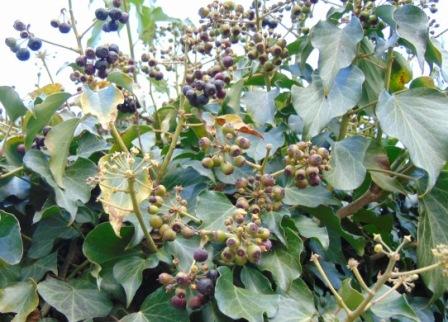Soapwort (Saponaria officinalis) is a perennial, up to 70 cm tall plant from the carnation family (Caryophyllaceae). The name is derived from the toxic substance saponin that the plant contains, especially in the root, and that starts to foam upon contact with water. An infusion of the roots of the plant was beaten until frothy and formerly used for bleaching laundry. The dried foam is then wiped away later. Stems and leaves seem to clean better. For soapy water, boil about 1 gram pieces soapwort root 5 minutes in 1 liter of water.
Alfalfa: 100 grams root per liter of water.
 Other herbs that saponins have in high concentrations include the ragged robin, lilies, agaves, (bruised leaf) horse chestnut, lucerne (100 g root per liter of water), ivy.
Other herbs that saponins have in high concentrations include the ragged robin, lilies, agaves, (bruised leaf) horse chestnut, lucerne (100 g root per liter of water), ivy.
Boil 100 ivy leaves 10 minutes in 2 liters of water. Allow to cool. Strain the leaves and barks them. Put them back in the same water. Reheating, stir well and seven. This is an excellent detergent for textiles. Some people have an allergic skin reaction thereof. So do rinse well.
You can also use combinations of these plants.
You can break horse chestnuts, and soak a few hours in water, and you've ready suds.
Washnuts
The large soap nut tree (Sapindus mukorossi) grows in North India and Nepal at an altitude of 200-1500 meters. The flesh of the large soap nut contains about 15% saponins. The small soap nut (Sapindus trifoliatus) comes from the milder and warmer from South India and has less soap dust. The tree grows slowly and tolerates light frost.
You can also use sporadically pure wood ash with water. This dries out the skin brightly.
The Greeks scrape the dirt with a strigil (curved scraper) of their skin. The Romans took it over.
(They first clean it, perhaps.)
